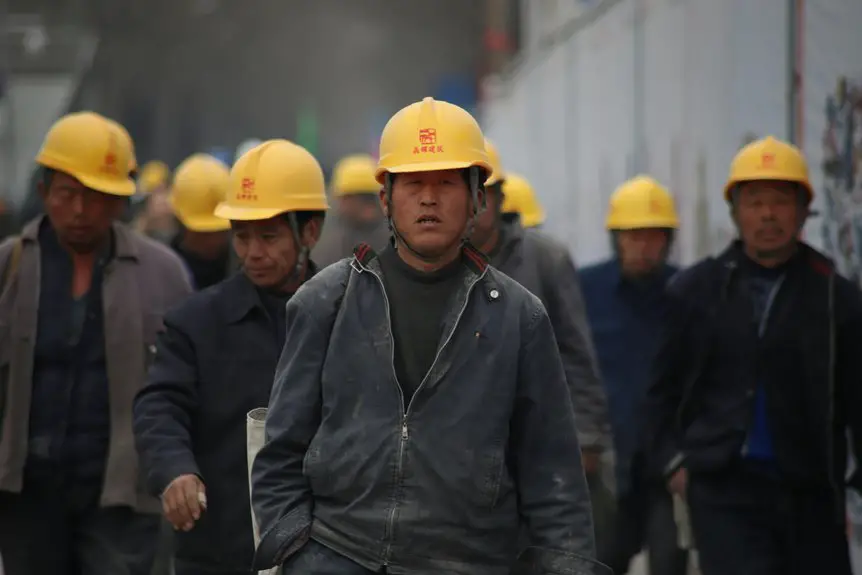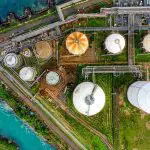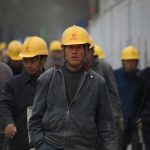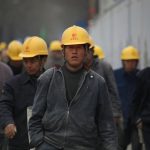You rely on China’s vast manufacturing network to produce Apple’s cutting-edge devices. Key cities like Shenzhen and Zhengzhou host massive assembly hubs, while suppliers such as BOE and CATL provide essential components. Foxconn and other partners guarantee efficient, high-quality production using advanced robotics and AI-driven quality control. China’s role also involves strict environmental and ethical standards. Exploring further reveals how this complex collaboration shapes Apple’s global supply chain and future innovation trends.
Table of Contents
Key Takeaways
- China hosts major Apple assembly hubs like Shenzhen and Zhengzhou, enabling efficient mass production of iPhones and other devices.
- Foxconn, China-based, is Apple’s largest assembly partner, operating vast factories with advanced automation and large workforces.
- Key Chinese suppliers provide critical components such as displays, camera lenses, batteries, and laser parts essential for Apple products.
- Advanced robotics, AI quality control, and skilled workforce training in China ensure high product standards and manufacturing precision.
- Environmental policies and ethical audits in China support Apple’s sustainability goals and maintain supply chain integrity.
Historical Development of Apple’s Manufacturing in China
Although Apple initially relied on manufacturers in the United States and other countries, it quickly shifted much of its production to China to capitalize on lower costs and a skilled workforce.
You’ll see that this shift began in the early 2000s when Apple partnered with firms like Foxconn, which offered efficient assembly lines and a vast labor pool.
As you follow the timeline, Apple’s production in China expanded rapidly, driven by demand for iPhones, iPads, and other devices.
You benefit from China’s infrastructure and manufacturing expertise, which helped Apple scale up quickly.
Over time, Apple also invested in developing supply chains within the region to improve component sourcing and quality control.
This historical development set the foundation for China’s central role in Apple’s global manufacturing network.
Key Chinese Cities and Regions for Apple Production
You’ll find that cities like Shenzhen and Zhengzhou play major roles in Apple’s manufacturing network.
Each region specializes in different aspects of production, from assembly to component fabrication.
Understanding these hubs helps you see how Apple’s supply chain operates efficiently across China.
Major Manufacturing Hubs
When you look at Apple’s manufacturing landscape in China, several key cities stand out as essential hubs.
Shenzhen, known as the “Silicon Valley of Hardware,” hosts major assembly plants, including those operated by Foxconn and Pegatron.
Nearby, Zhengzhou serves as a significant site for iPhone assembly, often called the “iPhone City” due to its massive production scale.
Suzhou and Shanghai also play important roles, housing factories focused on components and final assembly.
Additionally, Chengdu and Chongqing support Apple’s supply chain with specialized manufacturing and logistics operations.
These hubs benefit from robust infrastructure, skilled labor, and proximity to suppliers.
Regional Specializations
Since Apple relies on a vast network across China, each key city specializes in different stages of production to optimize efficiency.
When you look at cities like Shenzhen, Zhengzhou, and Suzhou, you’ll see how their unique strengths contribute to Apple’s supply chain. This regional specialization guarantees faster turnaround, better quality control, and cost-effective manufacturing.
Here are some key regions and their specializations:
- Shenzhen: Main assembly and electronics manufacturing hub
- Zhengzhou: iPhone final assembly and logistics center
- Suzhou: Component manufacturing, especially for chips and displays
- Chengdu: Smaller-scale assembly and testing of various Apple devices
Major Chinese Suppliers and Their Contributions
Chinese suppliers form the backbone of Apple’s manufacturing network, providing critical components and assembly services that bring products to life.
When you look at suppliers like BOE Technology, they supply advanced display panels for iPhones and iPads, ensuring vibrant visuals.
Lumentum offers laser components essential for Face ID technology, enabling secure facial recognition.
You’ll also find that companies like Sunny Optical contribute high-precision camera lenses, enhancing photo quality across Apple’s devices.
Additionally, you rely on CATL for cutting-edge battery technology that powers longer device usage.
These suppliers don’t just provide parts; they innovate, ensuring Apple stays ahead in technology.
The Role of Foxconn and Other Assembly Partners
You’ll notice Foxconn handles a massive portion of Apple’s assembly, operating key factories across China.
Their scale lets them meet Apple’s huge demand efficiently.
Plus, Foxconn works closely with other partners to keep production smooth and flexible.
Foxconn’s Manufacturing Scale
Foxconn operates one of the largest electronics manufacturing complexes in the world, assembling millions of Apple devices each year. When you consider the scale, you realize how vital Foxconn is to Apple’s supply chain.
You’ll find their factories equipped to handle massive production volumes, ensuring timely delivery despite high demand. They continuously invest in automation and workforce training to maintain quality and efficiency.
Here’s what stands out about Foxconn’s manufacturing scale:
- Employs hundreds of thousands of workers globally, with a large concentration in China
- Handles assembly for a broad range of Apple products, from iPhones to MacBooks
- Operates 24/7 shifts to meet production deadlines
- Implements advanced robotics alongside manual labor for precision and speed
Understanding this scale helps you appreciate how Apple meets global demand consistently.
Key Assembly Locations
Beyond Foxconn‘s massive manufacturing scale, Apple relies on several key assembly locations to keep production running smoothly.
You’ll find major plants in Zhengzhou, often called “iPhone City,” where Foxconn assembles millions of iPhones annually. Meanwhile, Pegatron handles significant iPhone assembly in Shanghai and Kunshan, complementing Foxconn’s output.
Wistron also plays a role, focusing on mid-tier models at its plants in Chengdu and other cities. These locations aren’t just about volume; they’re strategically placed to optimize logistics, labor, and supply chain efficiency.
When you hold an Apple device, chances are it passed through one of these precise assembly hubs in China, where skilled teams and advanced systems work together to meet Apple’s high standards and tight deadlines.
Partner Collaboration Dynamics
Although Apple’s product fabrication depends heavily on Foxconn, its collaboration with other assembly partners is equally essential.
You’ll find that Apple leverages multiple suppliers to optimize production efficiency, manage risks, and guarantee quality. Foxconn leads in assembling devices like iPhones, but companies like Pegatron and Wistron also handle significant volumes, especially for iPads and entry-level iPhones.
This network lets Apple scale quickly and adapt to market demands.
When you look at partner collaboration dynamics, consider these points:
- Shared innovation and quality standards across partners
- Flexibility in shifting production based on demand
- Risk diversification to avoid supply disruptions
- Continuous communication to streamline assembly processes
This collaborative ecosystem is key to Apple’s seamless product delivery.
Technological Innovations in Chinese Apple Factories
When you step inside Apple’s Chinese factories, you’ll see how cutting-edge technologies have transformed manufacturing processes.
Automated assembly lines equipped with advanced robotics handle delicate tasks with unmatched precision, speeding up production while minimizing errors.
You’ll notice AI-driven quality control systems scanning thousands of components in real time, ensuring every part meets Apple’s strict standards.
Smart sensors track materials and workflows seamlessly, reducing waste and downtime.
Additive manufacturing techniques like 3D printing are increasingly used for prototyping, enabling rapid innovation.
These innovations not only boost efficiency but also help maintain Apple’s commitment to sustainability by optimizing resource use.
Workforce and Skill Development in China
Since Apple’s Chinese factories rely heavily on advanced technology, they also invest considerably in workforce and skill development to keep pace. You can see how this focus guarantees workers stay updated with the latest manufacturing techniques and maintain high productivity.
Apple collaborates with local training centers to provide continuous education and hands-on experience. This approach helps employees master complex assembly processes and adapt quickly to new tools.
Apple partners with local centers to offer ongoing education, helping workers master assembly and new technologies.
Here’s how they develop their workforce:
- Offer specialized technical training programs tailored to Apple’s production needs
- Promote skill certification to encourage professional growth
- Implement mentorship systems pairing experienced workers with newcomers
- Provide language and soft skills courses to improve communication and teamwork
These efforts help you understand why China remains a crucial hub in Apple’s global supply chain.
Quality Control and Standards in Chinese Manufacturing
Building a skilled workforce is only part of the equation; maintaining strict quality control and high standards guarantees Apple products meet your expectations.
In China’s manufacturing plants, rigorous testing and inspection processes are embedded into every production stage. You’ll find advanced technologies like automated optical inspection and real-time data monitoring ensuring defects are caught early.
Apple collaborates closely with suppliers to enforce its quality benchmarks, conducting regular audits and training sessions to keep standards consistent. This proactive approach minimizes errors and enhances product reliability.
When you hold an Apple device, you’re experiencing the result of meticulous attention to detail and continuous improvement driven by these quality controls.
China’s commitment to upholding these standards plays a vital role in delivering the premium performance you expect from Apple products.
Environmental and Ethical Considerations in Production
Although meeting production demands is essential, Apple and its Chinese partners also prioritize environmental and ethical responsibilities.
You’ll find that they’ve implemented strict policies to reduce waste, minimize emissions, and guarantee fair labor practices. By doing so, they aim to produce devices responsibly while protecting the environment and workers’ rights.
Here are key environmental and ethical considerations in Apple’s Chinese manufacturing:
- Use of renewable energy sources to cut carbon footprint
- Rigorous audits to prevent labor abuses and guarantee safety
- Waste reduction programs focusing on recycling and reuse
- Compliance with international environmental standards and regulations
These efforts show Apple’s commitment to sustainable and ethical production, helping you feel confident about the products you use.
Impact of China’s Manufacturing on Apple’s Global Supply Chain
When you consider how Apple’s products reach you, China’s manufacturing plays an essential role in shaping the global supply chain. You rely on China’s vast network of suppliers and skilled labor to assemble complex devices quickly and cost-effectively.
This concentration enables Apple to maintain tight production schedules and respond rapidly to market demand. However, this dependence also means that any disruption in China—whether due to political tensions, natural disasters, or pandemics—can ripple throughout Apple’s entire supply chain, causing delays and increased costs.
You also see how China’s infrastructure, from ports to logistics, supports efficient distribution worldwide. Ultimately, China’s manufacturing ecosystem is a cornerstone that helps Apple deliver innovative products consistently, but it also presents vulnerabilities that require careful management.
Future Trends in Apple’S Collaboration With Chinese Manufacturers
You’ll notice that Apple’s partnership with Chinese manufacturers is evolving with new technologies reshaping production.
You can expect greater supply chain diversification to reduce risks and boost efficiency.
Plus, environmental sustainability efforts will play a bigger role in how Apple and China work together moving forward.
Emerging Manufacturing Technologies
As Apple continues to push the boundaries of innovation, it’s embracing emerging manufacturing technologies that promise to reshape its collaboration with Chinese manufacturers.
You’ll notice how automation and AI-driven processes enhance precision and efficiency, reducing errors and speeding up production. Advanced robotics are becoming integral, allowing for complex assembly tasks once thought impossible.
Additive manufacturing, like 3D printing, is gaining traction, enabling rapid prototyping and customization. Plus, the integration of IoT devices improves real-time monitoring and quality control, ensuring products meet Apple’s high standards.
Key technologies include:
- AI-powered quality inspection systems
- Collaborative robots (cobots) working alongside human operators
- 3D printing for rapid prototyping and small-batch production
- IoT-enabled smart factories for data-driven decision making
These innovations greatly boost productivity and product quality.
Supply Chain Diversification
Although Apple has long relied on Chinese manufacturers for its product fabrication, it’s actively diversifying its supply chain to reduce risks and increase resilience.
You’ll notice Apple expanding partnerships beyond China, tapping into manufacturing hubs in India, Vietnam, and Mexico. This approach helps you avoid disruptions caused by geopolitical tensions, tariffs, or local issues.
Apple still values Chinese expertise and infrastructure but balances it by spreading production. By doing so, you gain more flexibility and stability in product availability.
This diversification isn’t about abandoning China but complementing it, ensuring your devices reach you reliably despite global uncertainties.
As you see, Apple’s strategy focuses on maintaining a robust network that leverages strengths worldwide, keeping your favorite products accessible and innovation ongoing.
Environmental Sustainability Initiatives
Three key areas define Apple’s future collaboration with Chinese manufacturers on environmental sustainability: energy efficiency, waste reduction, and resource conservation.
You’ll see more factories adopting renewable energy sources to cut carbon footprints. Waste management will improve with advanced recycling programs that minimize landfill use. Resource conservation efforts focus on using sustainable materials and optimizing supply chains to reduce excess consumption.
Here’s what you can expect:
- Increased use of solar and wind power in manufacturing plants
- Implementation of closed-loop recycling systems
- Adoption of eco-friendly materials like recycled aluminum and bioplastics
- Enhanced monitoring and reporting on environmental impacts
Frequently Asked Questions
How Does Apple’S Product Pricing Vary Across Different Countries?
You’ll notice Apple’s product pricing varies due to taxes, import fees, and currency differences. So, prices in some countries are higher or lower, reflecting local economic conditions and regulatory costs Apple has to cover.
What Is Apple’S Strategy for Marketing Products in China?
Like a knight adapting to new battles, you’ll find Apple tailors marketing in China by embracing local trends, partnering with influencers, and leveraging digital platforms. They don’t just sell products; they build cultural connections that resonate deeply.
How Does Apple Manage Intellectual Property Protection Internationally?
You protect Apple’s intellectual property internationally by registering patents, trademarks, and copyrights in key markets. You also enforce rights through legal actions and collaborate with local authorities to combat counterfeiting and unauthorized use effectively.
What Are the Main Software Development Centers for Apple Worldwide?
Imagine Apple’s software teams as chefs in global kitchens. You’ll find major centers in Cupertino, California; Seattle; Cambridge, UK; and Bangalore, India, all cooking up innovative code that keeps Apple’s products running smoothly worldwide.
How Does Apple Handle Customer Service and Support in China?
You can rely on Apple’s customer service in China through official Apple Stores, authorized service providers, and Apple Support online. They offer assistance in Mandarin, ensuring you get help with repairs, troubleshooting, and product information efficiently.
- Does Chiffon Fabric Stink - July 15, 2025
- Does Chiffon Fabric Affect the Economy - July 15, 2025
- Does Cotton Fabric Have a Nap - July 15, 2025







